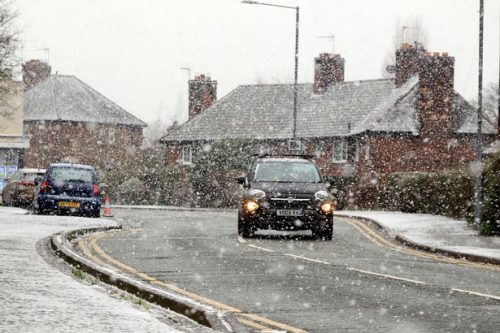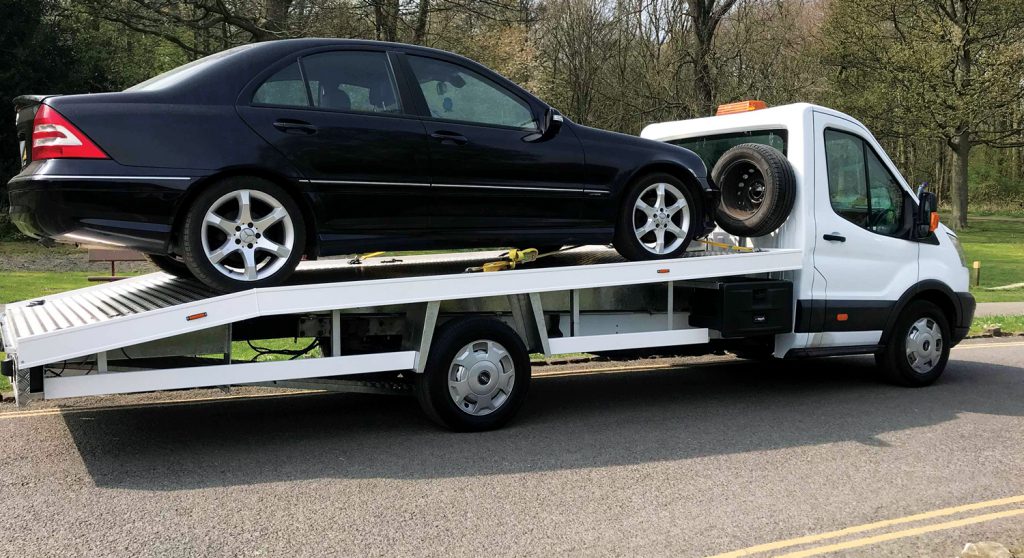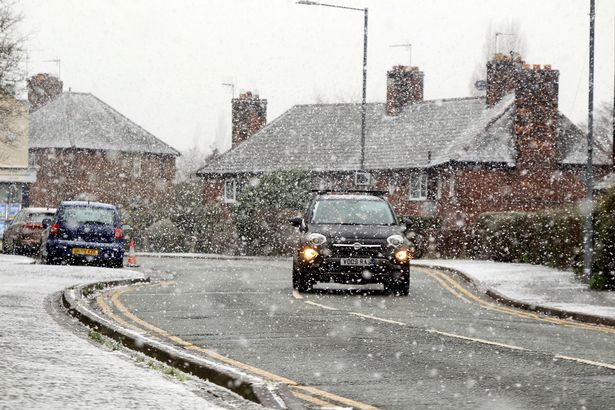
Driving may seem like an easy enough task, but driving in harsh weather conditions is a different situation altogether. Driving in bad weather for the first time can be challenging and can trigger anxiety. You may end up having car problems and having to call the local tow truck service near you to help you out. It will, however, undoubtedly be the first of many journeys on which you will be driving in adverse conditions.
Driving in challenging conditions isn’t only confined to bad weather. Driving in a remote area at night where there is no street lighting or when the sun is low in the sky and blinding you can be more difficult. Extreme weather events such as heavy rain, snow, ice, fog, thunderstorms, and high winds are becoming more frequent in recent years. Bad weather and poor road conditions make it impossible for drivers to drive safely for themselves and others. Various weather conditions necessitate various precautions and safety measures to be kept in mind while driving.

Let Us Take A Look At The Top Dangerous Weather Conditions For Drivers:
Heavy Rains
One of the most common dangers while driving is the rainy weather. It impairs manoeuvrability and braking, as well as increasing the chance of skidding. It also presents hazards such as standing water and decreased visibility.
Due to heavy rains, there are high chances of your vehicle skidding across the road or you crashing into another vehicle due to the impaired view caused by the rain. Rain necessitates a higher level of vigilance as well as slower speeds. Since brakes don’t work as well on wet roads, it’s best to keep a fair distance between you and the car in front of you. Enable the car in front of you to go first when the road has flooded, and drive slowly in the middle of the road. After that, check the brakes to see if they’re working properly.
There have been numerous cases of drivers having to call their local tow trucks after crashing their vehicle due to the heavy rains.
Windy Weather
Strong winds can cause objects to get under your car. This can harm and affect the braking system. If the wind is strong enough, it can also cause objects such as stones, leaves or anything else lying on the road to fly and crash with your windshield.
As a result, it is advised that you choose a path that avoids exposed areas. Overtaking high-sided vehicles should be avoided, and both hands should be on the steering wheel. In high winds, be extra cautious around cyclists and motorcyclists, as they are more vulnerable. If unfortunately, a situation does arise where your brakes are not working properly, stop driving and call your local tow truck.
Icy and Snowy Weather
Car accidents are more likely to occur when the highways are covered in ice and snow. It is recommended that you slow down in such a situation. And if you have an SUV or four-wheel drive, you should be cautious because weather-related accidents can happen to them as well. Always be conscious of your surroundings. Also, since brakes are less powerful on snow and ice, brake early.
Foggy Weather
Fog may appear to be a lesser threat than snow and rain. It is, however, a hazardous condition that may result in injuries. Since visibility is reduced in fog, you have less time to respond to possible hazards, and driving manoeuvres like braking and changing lanes become even more dangerous. Furthermore, in the fog, headlights are ineffective, reflecting the light back at drivers rather than lighting the road ahead. To ensure protection, use the front lights to improve visibility and slow down.
When it is dark outside
When driving in the dark, it is recommended that you use your high beams to see as far as possible and that you maintain a pace that allows you to brake quickly if necessary. It’s a smart idea to turn to low beams as soon as you see another vehicle approaching. Flashing your lights will cause the other driver to become distracted. Focus on the left-hand edge of the road rather than the approaching headlights. If you’re unsure, take it slowly. Keep an eye out for bikes without lights and pedestrians dressed in dark clothing in cities and towns.
How to Drive in Dangerous Conditions Safely
Your planning and practice will be put to the test when driving through hazardous conditions such as snowy or icy roads, heavy rain, or dense fog. Just because there isn’t much snow doesn’t mean it isn’t dangerous; it can become very slick. When you consider how much oil and exhaust coats the roads, it’s easy to see how even a small amount of rain or snow could make the roads slick and cause you to lose control of your car, prompting you to contact your local tow truck. Not to mention fog and dust storms, which can totally obscure your view.
Preparing for an emergency
When driving in hazardous situations, consider what could come in handy if an emergency situation arises. Water, blankets, and flares are among the most commonly used products. Even if the roads are in good shape, you should have a first-aid kit on hand. It is also a good idea to get your car serviced regularly or call a local tow truck before your drive.
Aside from the basic first-aid supplies including bandages and wound-cleaning ointment, you should have some large towels on hand to apply pressure to any potential wound. Gauze, cotton balls, eye drops, pain relievers, and a CPR guide should all be included in the package (found online).
If you’re going on a trip and expect bad weather, make sure you have enough supplies. Snow travel, for example, can necessitate the use of tyre chains or clothing that can be thrown on to get muddy if you need to dig out of the snow. Rubber garden gloves are a good option because they cover your hands while still allowing you to use your fingers completely.
If you’re going on a trip where rain is likely, carry extra clothing so you don’t have to sit in wet clothes if anything goes wrong. When you’re driving, you have to be constantly thinking about what could happen. A mobile phone, as well as a car charger, are essential items to have in case you get stranded or need any other assistance.
It’s worth noting that snow and rain aren’t the only dangers on the route. Extreme heat, for example, can be particularly damaging to cars and their occupants, so make sure there is always enough water. You can need to switch off the air conditioning to increase engine power or prevent the engine from overheating in some cases. Wet clothes are a suitable choice for cooling down in emergency situations if there is no air conditioning.
Strong winds can also be dangerous because they can cause trees or power lines to collapse. In these cases, exercise extreme caution and remain focused on what’s in front of you and around you.
It’s important that you don’t let the outside world distract you. Slow down if you start to feel anxious or contact your local tow truck. It doesn’t matter if the people around you aren’t fond of it; you can drive in the manner that makes you feel most at ease. The protection of everybody in your car takes precedence over the opinions of other drivers.
Make use of your wisdom
Using common-sense as the first and most critical rule when driving in hazardous conditions. When visibility is poor, you know you should slow down, and if you can’t see more than a few feet ahead of you, you shouldn’t drive at all. To avoid being struck by other vehicles, pull off the road as far as possible, turn on your hazards, and get a safe distance away from the car.

Test your brakes
The second rule of driving in hazardous conditions is to assess the severity of the situation. Choose a location with plenty of open roads and no approaching or the following traffic, and then try to come to a fast stop. This test will help you decide how much stopping space you’ll need for the current circumstances, as well as the best course of action to take if you lose control of the car causing you to call your local tow truck.
Safe Distance and Speed
The third rule for driving in adverse environments is to maintain reasonable distances from the vehicle in front of you. Consider a scenario in which a driver was forced to slam on the brakes due to an animal darting across the lane. Will you be able to stop in time to avoid having to read-end the person? If not, you’ll need more room. Allowing people who are tailgating you to bully you into tailgating someone else is not a good idea.
One of the most common errors made by drivers is leaving insufficient space between themselves and the vehicle in front of them. Recognize that you are not in a sprint and that your only goal is to relax and arrive safely at your destination.
Don’t slam on the brakes to spite the drivers behind you who are driving aggressively and not leaving enough room between themselves and the car ahead of them. Maintain a steady speed and consider allowing more room in front of you for the offensive driver to pass. There’s a fair chance that whoever is driving aggressively will be stopped anyway.

